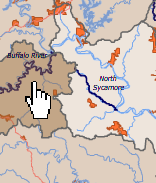Communities across the country are on the front lines of addressing the immediate and growing national challenge: aging and inadequate water infrastructure. Most of the country’s underground water infrastructure was built 50 or more years ago, and in some older cities, water mains are a century old. As this infrastructure ages, it takes a significant toll on local economies, public health, and the environment.
As states and communities explore ways to fund critical water infrastructure improvements, one opportunity to seriously consider is a federal loan and guarantee program offered by the U.S. Environmental Protection Agency (EPA) known as WIFIA, or the Water Infrastructure Finance and Innovation Act (WIFIA) program.
EPA launched WIFIA with a goal to accelerate investment in the nation’s water infrastructure by providing long-term, low-cost supplemental loans for regionally and nationally significant projects.
On April 20, 2018, King County, Washington, received WIFIA’s first-ever loan to help finance nearly half the County’s $275 million new wet weather treatment station. Because WIFIA offers loans with low, fixed interest rates, King County is expected to save up to $32 million. Further, the project is expected to create 1,400 jobs and will collect and treat up to 70 million gallons of rain and wastewater per day that would have spilled into a nearby river during bad weather.
“An investment in water infrastructure is an investment in our communities,” said Dr. Andrew Sawyers, director of EPA’s Office of Wastewater Management. “EPA’s WIFIA program helps improve water quality and protect public health while supporting the local economy.”
The WIFIA program recently announced the availability of up $5.5 billion in credit assistance. While the agency will be prioritizing funding for projects that remove contaminants, like lead, in drinking water systems and projects that modernize aging infrastructure. WIFIA credit assistance can be used for a wide range of projects, including:
- Drinking water treatment and distribution projects;
- Wastewater conveyance and treatment projects;
- Enhanced energy efficiency projects at drinking water and wastewater facilities;
- Desalination, aquifer recharge, alternative water supply, and water recycling project; and
- Drought prevention, reduction, or mitigation projects.
But act fast—states, cities, tribes, utilities, and other public and private entities that are interested in applying, must submit a letter of interest to the agency by July 31st, 2018.
The WIFIA program provides helpful resources online to submitting a successful letter of interest, including a checklist and sample application materials.
Have Additional Questions?
Attend EPA’s free question and answer webinar on the Letter of Interest submission and selection process scheduled on May 30, 2018, visit the program’s website at www.epa.gov/wifia or send an email to the program at This email address is being protected from spambots. You need JavaScript enabled to view it..
Anne Idsal, Regional Administrator, EPA Region 6
